Affiliate links on Android Authority may earn us a commission. Learn more.
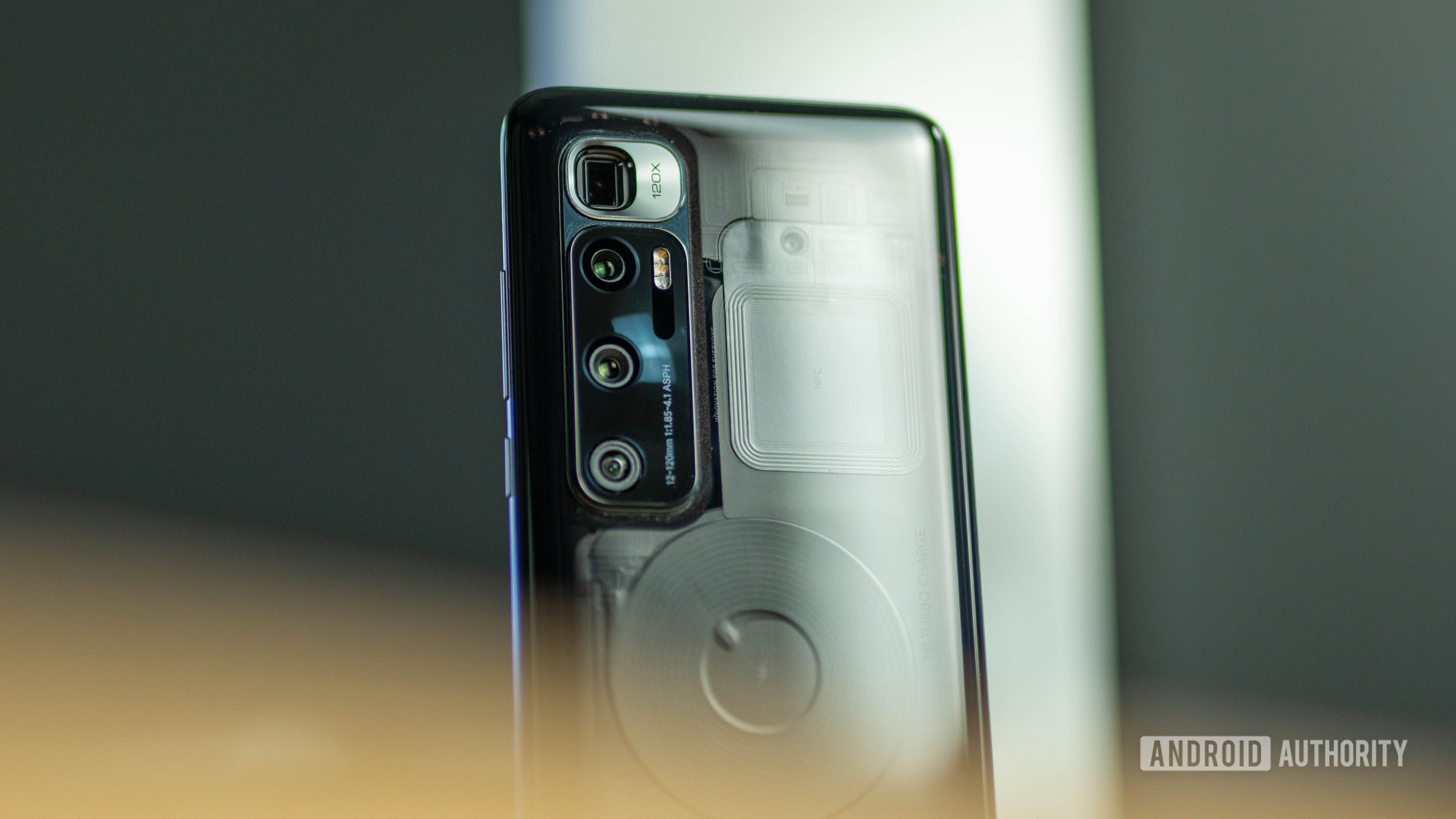


Xiaomi Mi 10 Ultra
What we like
What we don't like
Our scores

Xiaomi Mi 10 Ultra
The Xiaomi Mi 10 Ultra is the company’s flagship smartphone for 2020. It assembles top mobile technologies in a device with an unmatched spec sheet. It’s all about the big numbers with this smartphone, but how do those numbers translate in the real world? Find out in Android Authority’s Xiaomi Mi 10 Ultra review.
Design: Familiar territory
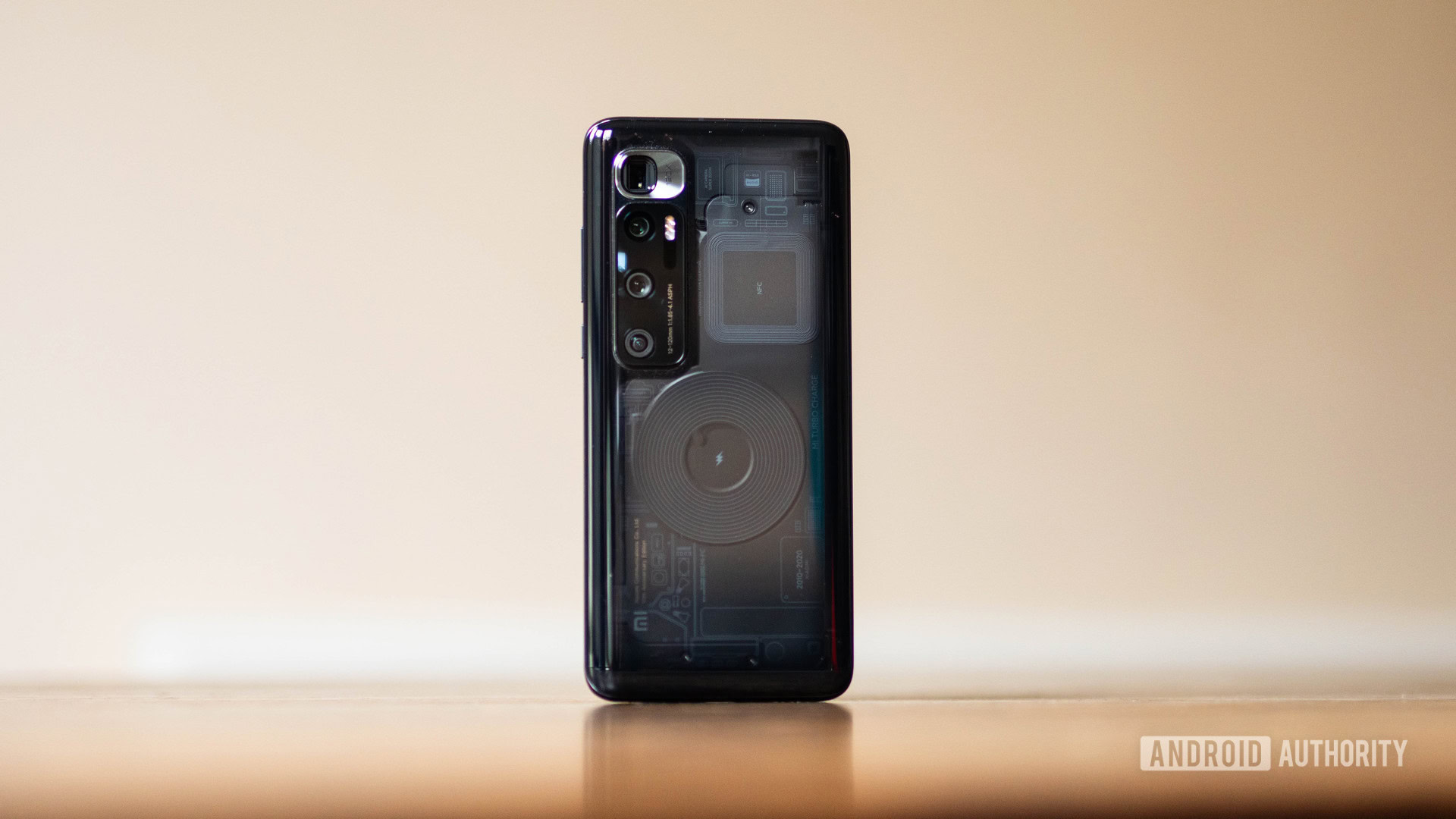
- Curved glass edges
- Aluminum rails
- Punch hole display
- 162.4 x 76.1 x 9.5mm
- 221.8g
The Xiaomi Mi 10 Ultra is a big smartphone in every dimension. In fact, it’s not far off from Samsung’s recently released Galaxy Note 20 Ultra, which itself is a behemoth. The Mi 10 Ultra is heavy and can be cumbersome if you don’t have big hands and deep pockets.
Read more: Samsung Galaxy Note 20 Ultra buyer’s guide
Xiaomi went with a glass sandwich design with aluminum rails and curved glass on both sides. On the front, there’s a full-size display with a punch hole in the top left and a speaker grille above the glass. The left side is blank while the right side has the volume rocker and power button. Up top is an IR-blaster and two microphones. On the bottom you’ll find the USB-C port, a microphone, the main speaker, and a dual-SIM tray. A large camera bump resides in the top left corner of the rear panel.
The device feels smooth in the hand thanks to the rounded rear glass and side rails. The buttons are clicky, if a tiny bit loose, and the haptics are tight and crisp. The in-display fingerprint scanner is reasonably quick and accurate. This “Transparent Edition” model shows off the device’s internals through the rear glass. The Xiaomi Mi 9 came in this style, too. As a whole, the phone looks and feels as premium as it should.
Related: iPhone 11 Pro Max review
One of the device’s most prominent features is the quad-camera array. The module is so large that when you’re holding the phone it can catch on your fingers. I found that unless you’re using a case, holding the phone for long stretches can be uncomfortable due to that camera bump. This is because the camera bump is rather tall and so the bottom ridge of it rubs on your fingers. I have small to medium-sized hands, so it could be more uncomfortable for those with bigger hands. Your experience may vary.
The Mi 10 Ultra is not IP-certified, which is unfortunate. Other phones at this price point, particularly those from Apple and Samsung, offer protection from water and dirt.
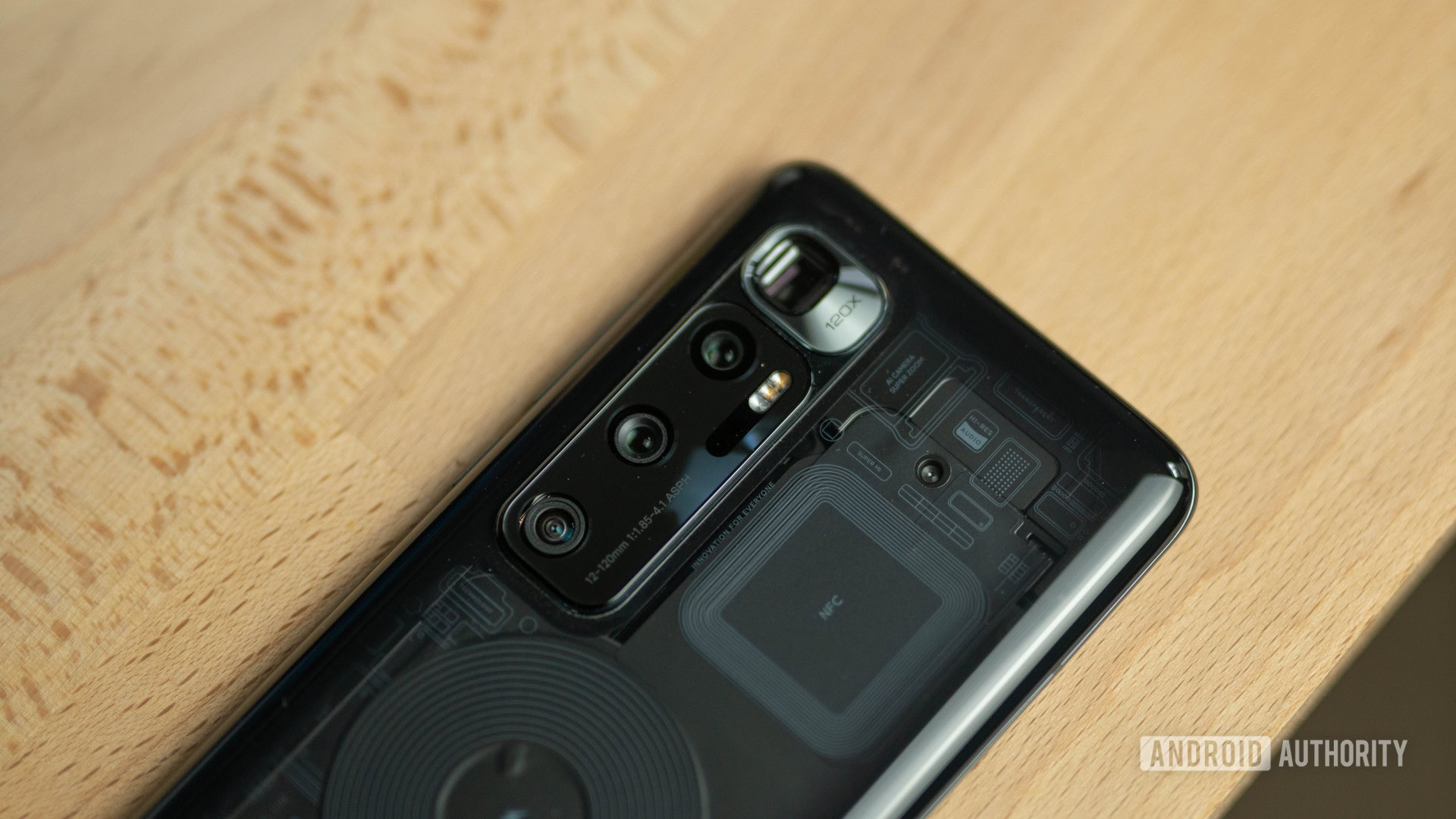
Xiaomi amplified the earpiece to work with the main bottom speaker to create a stereo effect. In practice, it’s a pretty tinny-sounding setup. It gets plenty loud but there’s not enough depth for my liking. Luckily, Xiaomi included a USB-C-to-3.5mm dongle in the box. The Mi 10 Ultra also features plenty of great Bluetooth audio codecs.
The Xiaomi Mi 10 Ultra looks and feels like its competitors.
Overall, the Xiaomi Mi 10 Ultra’s design is like others in this price category: It’s a curvy glass sandwich. While not inspiring, it’s at least familiar.
Display: Silky smooth, but not for pixel-peepers
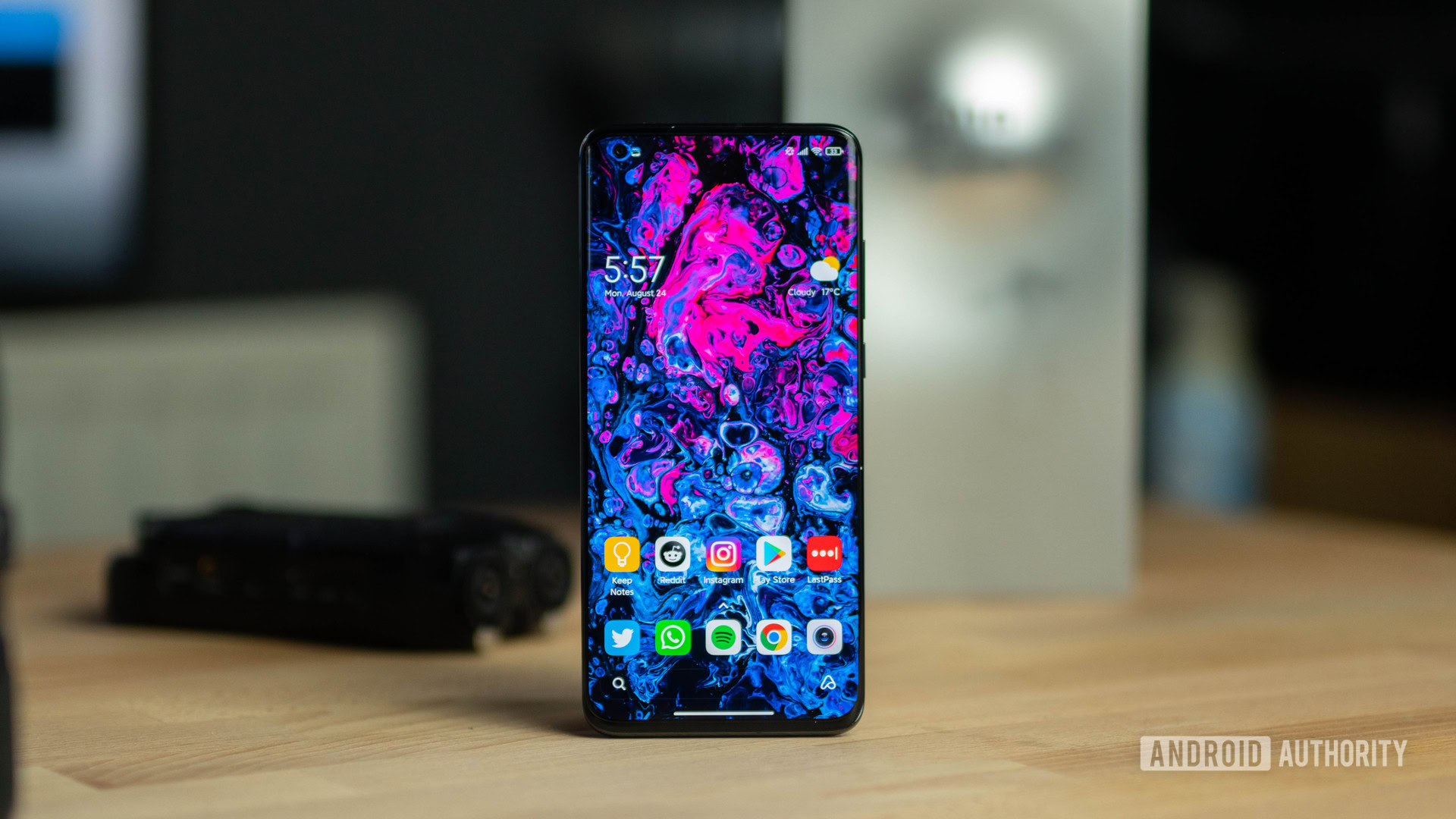
- 6.67-inch OLED
- 120Hz refresh rate
- 2,340 x 1,080 FHD+ resolution
- 19.5:9 aspect ratio
- HDR10+
Xiaomi opted for a Full HD+, 120Hz OLED panel instead of a Quad HD+ screen. At this price, I don’t think this is a problem given the rest of the tech that’s packed into the device. Competitors such as the OnePlus 8 Pro and Samsung Galaxy Note 20 offer higher resolution screens at this price point, but they don’t offer the same charging features. You can change the screen to 60Hz in the settings if you like.
The screen is vibrant, with deep contrast and a fast 120Hz refresh rate.
Continue reading: 90Hz smartphone display test: Can users really tell a difference?
The panel is smooth and fast, as well as vibrant with deep contrast. If you don’t like the excellent adaptive color setting, you can change it in the comprehensive display settings menu.
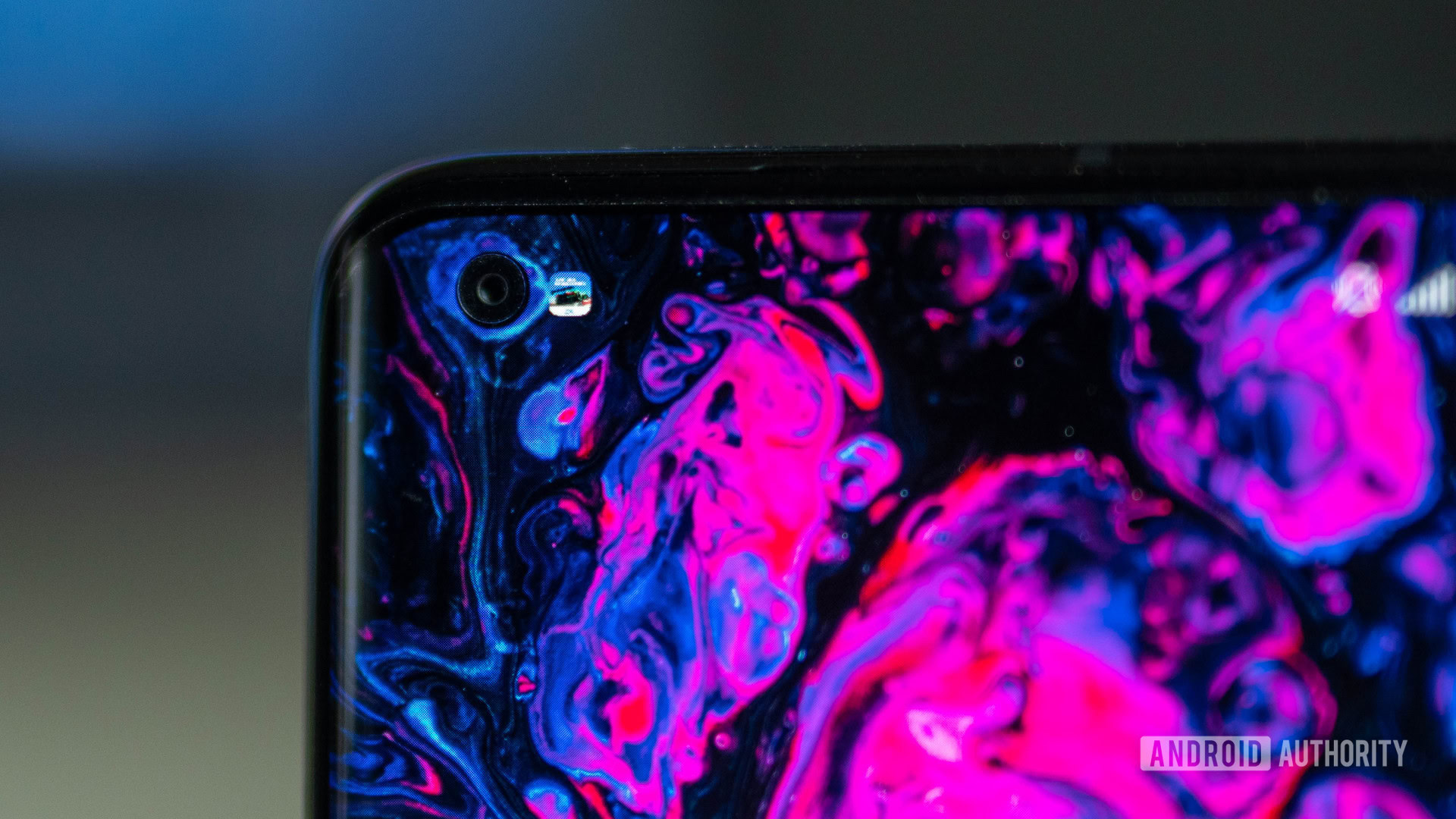
Brightness was quite good. Even under direct sunlight, the Mi 10 Ultra was easily viewable. It managed just over 480nits sustained in our testing, which is significantly higher than the competing Galaxy Note 20 Ultra’s 412nits.
If I had to complain about one thing, it would be the curved glass edges. Yes, they look great in product photos and promotional videos. However, in person, they add case complications and sometimes glare.
Performance and battery
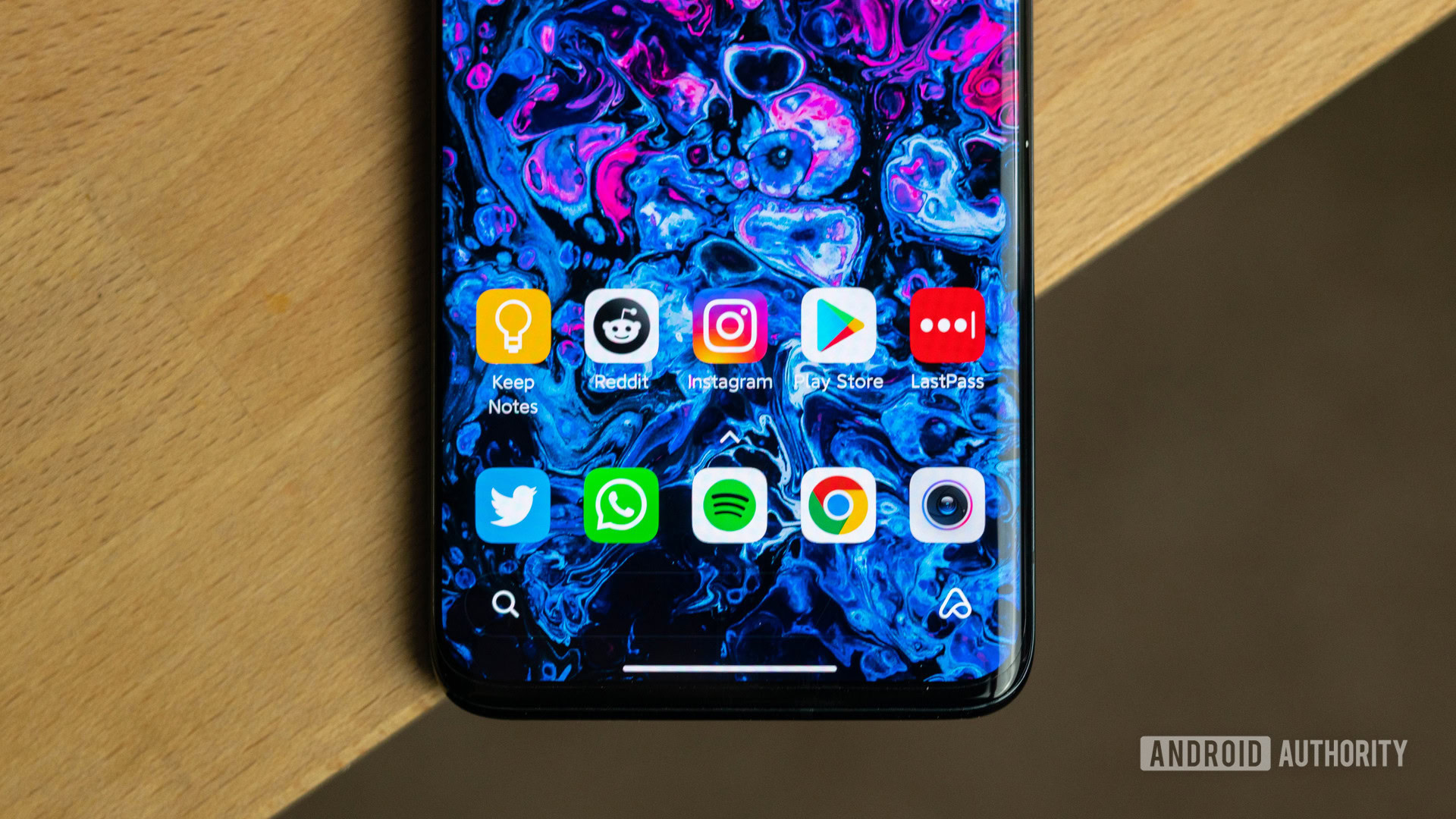
- Qualcomm Snapdragon 865
- Adreno 650 GPU
- 8/12/16GB RAM
- 128/256/512GB UFS 3.1 storage
- MIUI 12 on Android 10
- 4,500mAh battery
- 120W wired charging
- 50W wireless charging
- 10W reverse wireless charging
Performance: All but top-tier
The Xiaomi Mi 10 Ultra skips the fresh Snapdragon 865 Plus in favor of the regular 865. Xiaomi didn’t say why it shied away from the latest chip.
Either way, the Xiaomi Mi 10 Ultra is very fast — even the middle-tier 12GB RAM model that was provided to us for review. I didn’t have a single performance problem in my week with the device. I played lots of games, took many photos, and did a lot of multi-tasking. I just couldn’t get the Mi 10 Ultra to stutter. I think it’s fair to say that whatever you do on your phone will be light work for this device.
We ran all of our standard benchmarks and the Mi 10 Ultra performed admirably; the Mi 10 Ultra is no slouch.
Continue reading: The best smartphones with the Snapdragon 865
Battery: Cutting-edge charging tech
On the surface, the Mi 10 Ultra’s battery is an average size for this class of smartphone. It’s a 4,500mAh cell in a device with five cameras, a power-hungry chipset, and a big, high-refresh-rate display. Xiaomi’s software, however, works aggressively in the background killing applications and optimizing power usage to deliver good battery life. I was able to get one to two days of usage out of the Mi 10 Ultra. With typical use, I’d get a day and a half of battery life. On a quieter day, that would extend to two days.
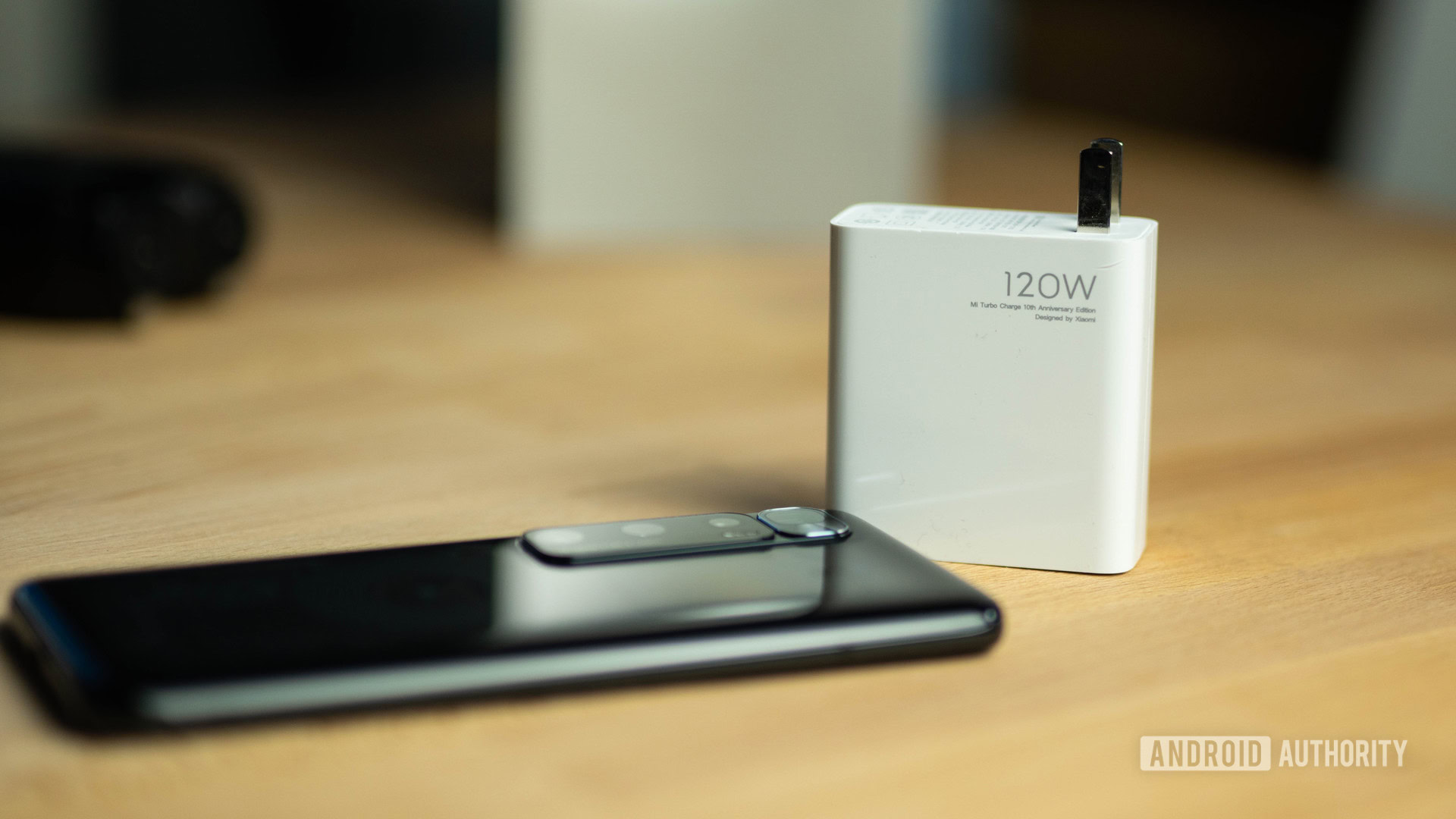
It’s in its charging capabilities that the Xiaomi Mi 10 Ultra truly shines. For starters, the device charged from 0-100% in just 21 minutes in our testing. How, you ask? The included 120W charging brick. This is the fastest-charging phone we’ve ever seen: it’s accomplished by charging two cells in parallel. The 4,500mAh battery is split into two. Each half charges at the same time. I also tested the 50W wireless charging and I came away equally impressed. To have a 4,500mAh battery charged in just over 40 minutes is impressive in wired form, let alone wirelessly!
Those charging speeds come at a cost. Both in wired and wireless charging, the Xiaomi Mi 10 Ultra gets uncomfortably hot. Of the two, wired charging makes the phone hot to the point where you wouldn’t want to hold it. This could potentially be harmful to the battery’s longevity and is something worth keeping in mind.
The charging is super fast, but its longevity is questionable given the heat generated when powering up.
The device offers 10W reverse wireless charging, too. I was able to charge an iPhone 11 from the Mi 10 Ultra via this function. In most implementations, reverse wireless charging can only reasonably charge accessories like wireless earbuds. In this case, you can actually charge whole phones with it.
Software: A love or hate situation
- Android 10
- MIUI 12
Xiaomi’s heavy skin is a love-it-or-hate-it thing. Almost every aspect of the user interface has been visually tweaked for a bubblier look. There was a lot of bloat on the Chinese unit I reviewed, too, though most of it was thankfully removable.
MIUI’s bubbly aesthetic can be found in everything from the notification pull-down, to the recents menu, to the home screen icons, to the font used throughout the interface. It isn’t going to be for everyone.
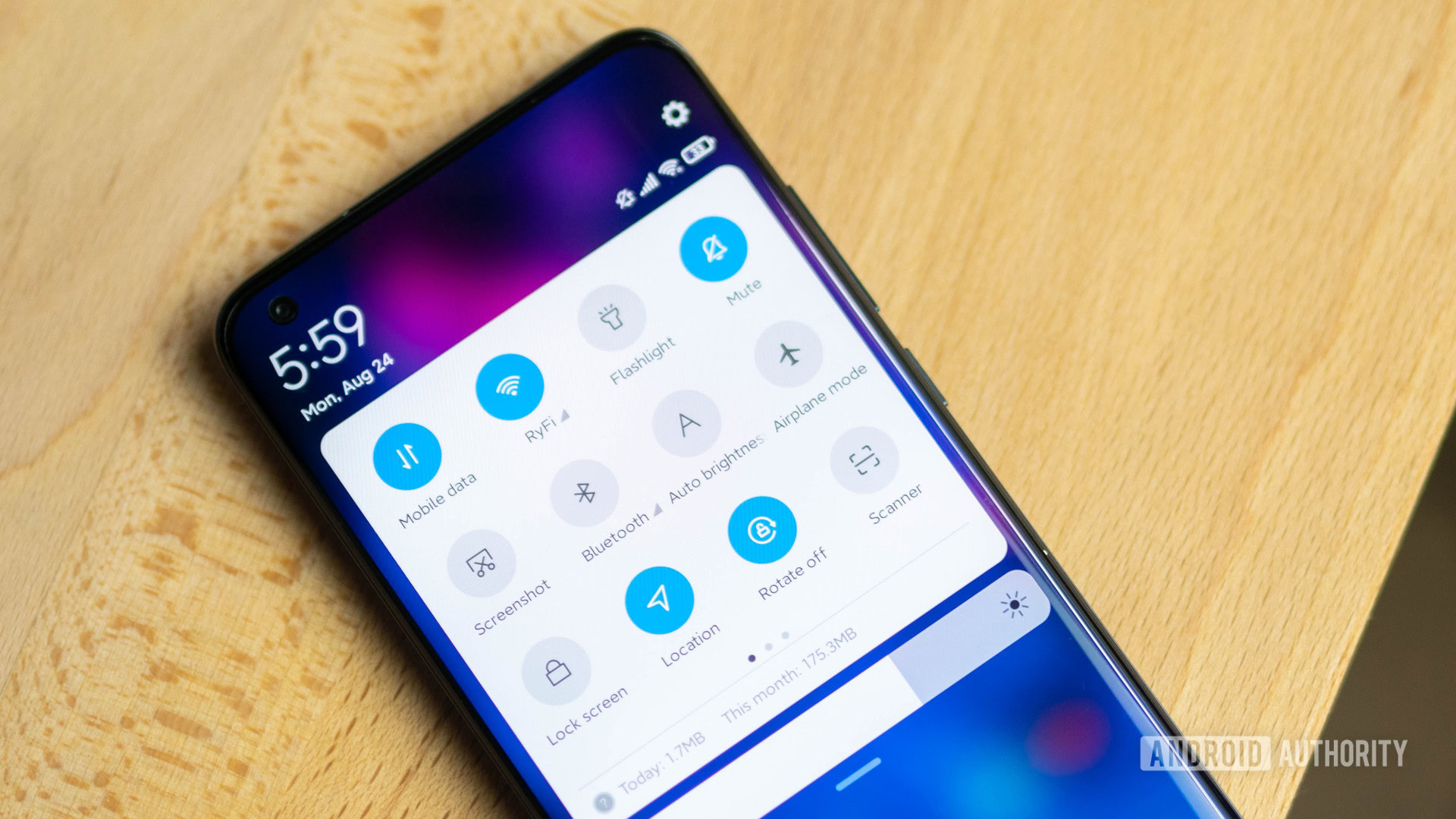
MIUI 12 has some useful extra features that don’t come with base Android. The built-in screen recorder, for example, is excellent and is easily accessible in the quick settings menu. Mi Remote is pre-installed so you can use your phone as a TV remote thanks to the IR blaster. Game Turbo allows you to balance frame rate, picture quality, and performance when gaming.
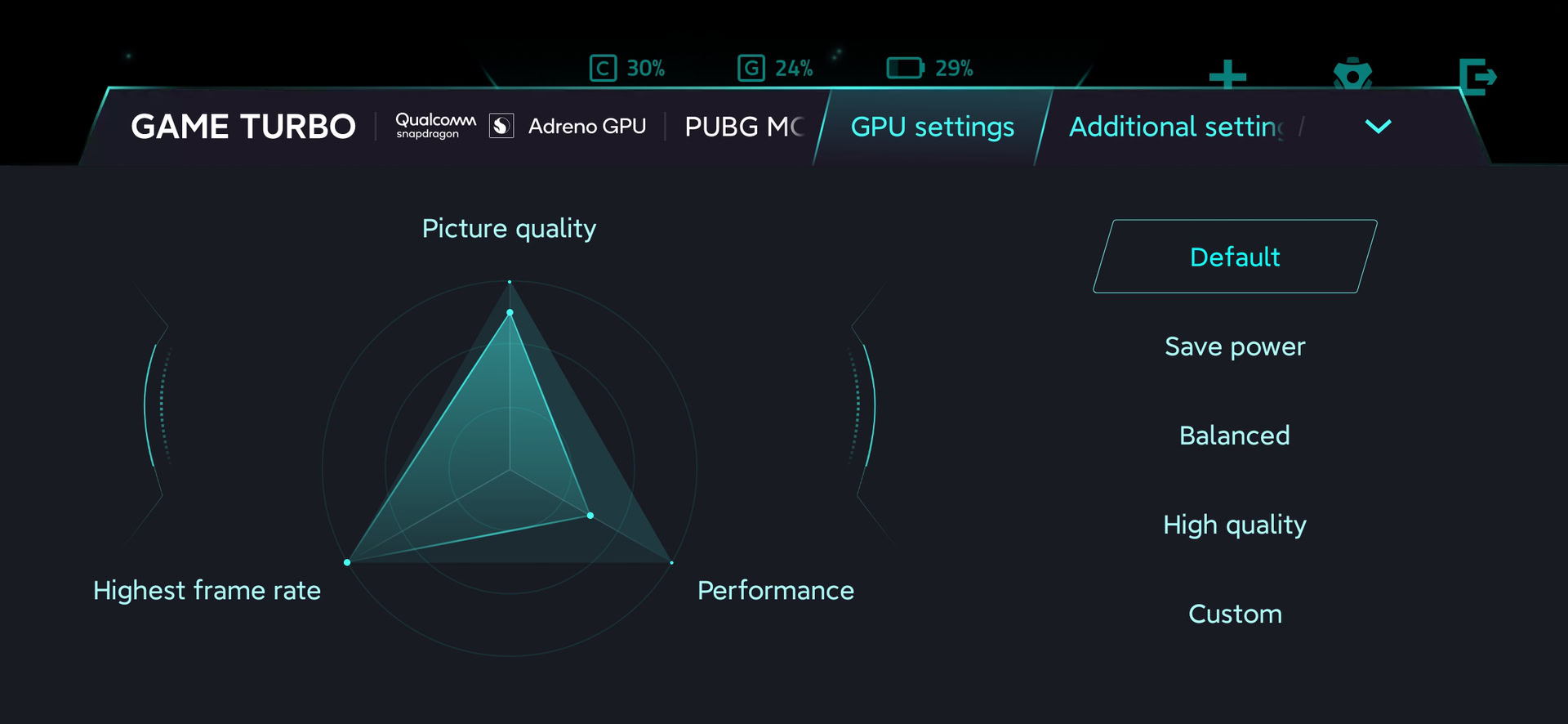
The Mi 10 Ultra doesn’t ship with the Google Play Store activated. To get the Google Play Store to work, I had to enable it in the GetApps app. I searched for the app and hit the update button. From there, the Play Store app appeared on the home screen and I was able to use the device as I would any other Google Play-enabled phone.
MIUI 12 has some useful features but its design won't be for everyone.
Unfortunately, I ran into an issue where the phone wouldn’t display notifications on the lock screen. There are options in the menu to disable this, but after multiple attempts, I couldn’t fix it. Xiaomi’s heavy task culling has played a role in issues like this before.
Camera: Playing with the big boys

- 48MP main, f/1.9, 1/3.2-in. sensor, OIS
- 48MP 5x periscope zoom, f/4.1, 1/2-in. sensor, OIS
- 20MP ultra-wide, f/2.2, 1/2.8-in. sensor
- 12MP 2x telephoto, f/2.0, 1/2.55-in. sensor
- Video: 8K @24fps, 4K @60fps, 1080p @960fps
- Selfie: 20MP, f/2.3, 1/3.4-in. sensor
- Selfie video: 1080p @30fps, 720p @120fps
The Xiaomi Mi 10 Ultra takes punchy and contrast-heavy images, with a fair amount of dynamic range. In good light, there’s not much change between all four rear sensors in terms of quality. Colors stay pretty consistent and are slightly oversaturated. This is most noticeable in the pictures of the vibrant flowers and in my garden.
The Mi 10 Ultra seems to be able to capture white balance well. In none of the hundreds of pictures that I took did I think something looked off or inaccurate. On dull days, the phone took dull photos. On bright days, the phone took bright photos.
About one-third of the time, the Mi 10 Ultra struggled with autofocus on both the main and telephoto lenses. Sometimes, it simply wouldn’t autofocus at all and so required a lot of tap-to-focus, which is rather cumbersome when you’re zoomed in — things can get shaky! It’s not inaccurate all of the time, but one out of three times is too often for my liking. Once focused the photos looked sharp throughout.
The device performs well in low light. Both of these shots (below) were taken in the regular photo mode and both came out great. In the Iron Man canvases, there was a small amount of light coming in through a window. The phone boosted exposure to gather detail from everything in the frame. In the shot of a clock, the lighting situation was much worse. There was a very small amount of light. The device, once again, boosted exposure to make sure the clock was sharp. There isn’t much noise in the images, either, which is great to see.
Continue reading: The best smartphones with ultra-wide cameras
The main camera’s digital sharpening isn’t overdone, which means there aren’t any weird-looking sharp edges to objects. When zooming in 5x or more, digital sharpness becomes a big factor in getting usable images. You’ll notice unrealistic contrast in shots of significant zoom length to make up for the sensor-crop.
Noise reduction is a little aggressive in shots with lots of contrast. I noticed that some trees and my cat g0t the worst of it. It’s particularly prominent in shots taken with the ultrawide and 5x cameras.
The Mi 10 Ultra’s biggest photography feature is its zoom functionality. Samsung offered 100x zoom in the S20 Ultra, but Xiaomi is offering 120x in the Mi 10 Ultra. Optically, it’s only 5x zoom thanks to the internal periscope lens. That means the rest of the zoom is being accomplished by cropping in the 48MP sensor. This might sound like a bad idea, but there’s plenty of resolution to play with, even at high zoom levels.
Below is a 120x shot of a sign in a garden center, right next to the main camera, 5x, and 10x versions. This shows off just how powerful this feature is. The text on the sign is clear thanks to the digital sharpening and correction. 120x images definitely suffer from a big drop in quality. I’d wager you’ll toss 80% of 120x shots you take, but having the option can be handy and fun to experiment with.
However, because the camera struggles to focus, and because you have to hold incredibly still at 120x zoom, getting distant objects to look sharp is a challenge.
The Mi 10 Ultra's night mode really falls apart.
I found the Mi 10 Ultra’s night mode to be one of the worst I’ve ever encountered on a flagship smartphone. It struggled with flares, captured very little detail, and was overall rather disappointing.
The Mi 10 Ultra acts rather odd in night mode. Unlike rival handsets that pause to take long exposures, the Mi 10 Ultra’s capture time feels as fast in the dark as it is in low light. As a result, image quality comes out looking pretty poor. However, the phone is still clearly using longer exposures than it does in the day, as many of my pictures came out blurry too. Regardless of what’s going on behind the scenes, the night mode results are really poor.
I believe that this could be fixed in a software update. Until that happens, the Mi 10 Ultra has an underwhelming-at-best night mode experience.
The Mi 10 Ultra takes some decent selfies, though there is a fair amount of skin-smoothing going on. I turned all of the enhancements off in the camera app, but the device still wanted to smooth out my face. It’s not overly extreme and there is still some detail left, but it’s not all there.
Selfie portrait mode photos seem to look rather realistic. Xiaomi lets you adjust how blurry you want the background to be.
There is a fairly sharp cutout around the edge of me in these portrait selfies with some blurring artifacts around my t-shirt. In an Instagram feed, it doesn’t look distracting. However, blowing up the image on a computer screen is when you really see the defects.
Flipping the camera around, portrait mode is noticeably better. In this shot of me in a garden center, the edge detection does a fantastic job of cutting me out of the background. There’s not a single artifact in this image. In this image of a statue, the Mi 10 Ultra’s good portrait mode shines further. It cuts the statue out from the background well and emulates true depth of field.
The Mi 10 Ultra’s video is average at best. It’s got 8K @24fps video support alongside the standard UHD 60fps mode. There’s also a 960fps slow-motion mode. The camera does hunt for exposure due to the on-the-fly HDR processing, which can be off-putting. That said, it doesn’t happen all the time.
The Xiaomi Mi 10 Ultra’s camera app is both comprehensive and intuitive to use. There are many modes and options for those who want them and simple controls for those who don’t.
Xiaomi Mi 10 Ultra specs
| Xiaomi Mi 10 Ultra | |
|---|---|
Display | 6.67-inch AMOLED (punch-hole cutout) 19.5:9 aspect ratio, 120Hz Full HD+ HDR10+ Under-display fingerprint sensor |
Processor | Qualcomm Snapdragon 865 Adreno 650 GPU LiquidCool Technology 2.0 vapor chamber |
Memory | 8/12/16GB LPDDR5 RAM |
Storage | 128/256/512GB UFS 3.1 storage |
Battery | 4,500mAh 120W wired charging 50W wireless charging 10W reverse wireless charging 120W charger in box |
Camera | Rear: Main: 48MP, f/1.85, 1/1.32-inch sensor, 1.2 micron pixels Ultra-Wide: 20MP, f/2.2, 128-degree FoV Periscope: 48MP, 1/2.0-inch sensor, f/4.1, 120x digital zoom Telephoto: 12MP, f/2.0, 1.4 micron pixels, 2x optical zoom Front: Selfie: 20MP f/2.3, 1/3.4-in sensor, 0.8 micron pixels |
Dimensions | 162.38 x 75.04 x 9.45mm |
Weight | 221.8g |
Colors | Obsidian Black, Mercury Silver, Transparent Edition |
Value for money
- Xiaomi Mi 10 Ultra: 8GB/128GB — CNY 5,299 ($760)
- Xiaomi Mi 10 Ultra: 8GB/256GB — CNY 5,599 ($805)
- Xiaomi Mi 10 Ultra: 12GB/256GB — CNY 5,999 ($865)
- Xiaomi Mi 10 Ultra: 16GB/512GB — CNY 6,999 ($1,010)
Right now, the Xiaomi Mi 10 Ultra is only available in China. This means that if you want to get one, you’ll have to import it and pay the extra fees/taxes. Due to these added costs, the top spec model comes in at over £1,000 and so is competing with premium flagship smartphones. There are four variants to choose from, each priced very well in the Chinese market.
This device is out there to compete with the OnePlus 8 Pro, the Galaxy S20 Plus, and the OPPO Find X2 Pro. Compared to those, this has much faster wired and wireless charging and a better-balanced camera setup. However, the camera processing isn’t quite up to snuff against the competition. The Mi 10 Ultra can’t match the brilliant display or design os the S20 Plus, but does beat it in charging and performance.
The Mi 10 Ultra packs in loads of specs and features into a single device. That’s a lot of phone for the money, but we’ll have to see if Xiaomi decides to launch it globally, which might change the value equation just a bit.
Xiaomi Mi 10 Ultra: The verdict

The Xiaomi Mi 10 Ultra does so many things right. It’s got a great display, a fantastic camera setup, next-level charging speeds, good battery life, and brilliant performance. For the equivalent of $1,000, even the top-spec model is a great value proposition. And if you don’t need it, the base model is priced near enough the OnePlus 8 Pro.
However, it’s not perfect. We would have expected an IP rating at this price point. Xiaomi really needs to fix its notification problem. The heat generated while charging isn’t comforting either. Compared to the HUAWEI P40 Pro, this doesn’t feel quite as polished. Some will find the heft and the uninspiring design to be a dealbreaker, and some will turn their nose up to the mere Full HD+ panel. However, as a package, Xiaomi has done a great job with the Mi 10 Ultra.
Xiaomi really put the pressure on its competitors to up the ante when it comes to battery technology. There’s no doubt that the Mi 10 Ultra can compete with the big boys in the premium flagship space. It’s a shame that the phone is not yet readily available outside of China.